Monocular depth estimation is a pc imaginative and prescient job the place an AI mannequin tries to foretell the depth info of a scene from a single picture. On this course of, the mannequin estimates the space of objects in a scene from one digital camera viewpoint. Monocular depth estimation has many purposes and has been broadly utilized in autonomous driving, robotics, and extra. Depth estimation is taken into account one of many hardest pc imaginative and prescient duties, because it requires the mannequin to know complicated relationships between objects and their depth info. This implies many elements come into play when estimating the depth of a scene. Lighting circumstances, occlusion, and texture can enormously have an effect on the outcomes.
We’ll discover monocular depth estimation to know the way it works, the place it’s used, and tips on how to implement it with Python tutorials. So, let’s get began.
About us: Viso Suite is end-to-end pc imaginative and prescient infrastructure for enterprises. Housed in a single platform, groups can handle a variety of duties from individuals counting to object detection and motion estimation. To see how Viso Suite can profit your group, e-book a demo with our crew of specialists.
Understanding Monocular Depth Estimation
Depth estimation is a vital step in the direction of understanding scene geometry from 2D pictures. The aim of monocular depth estimation is to foretell the depth worth of every pixel. That is known as inferring depth info, utilizing just one RGB enter picture. Depth estimation methods analyze visible particulars corresponding to perspective, shading, and texture to estimate the relative distances of objects in an Picture. The output of a depth estimation mannequin is usually a depth map.
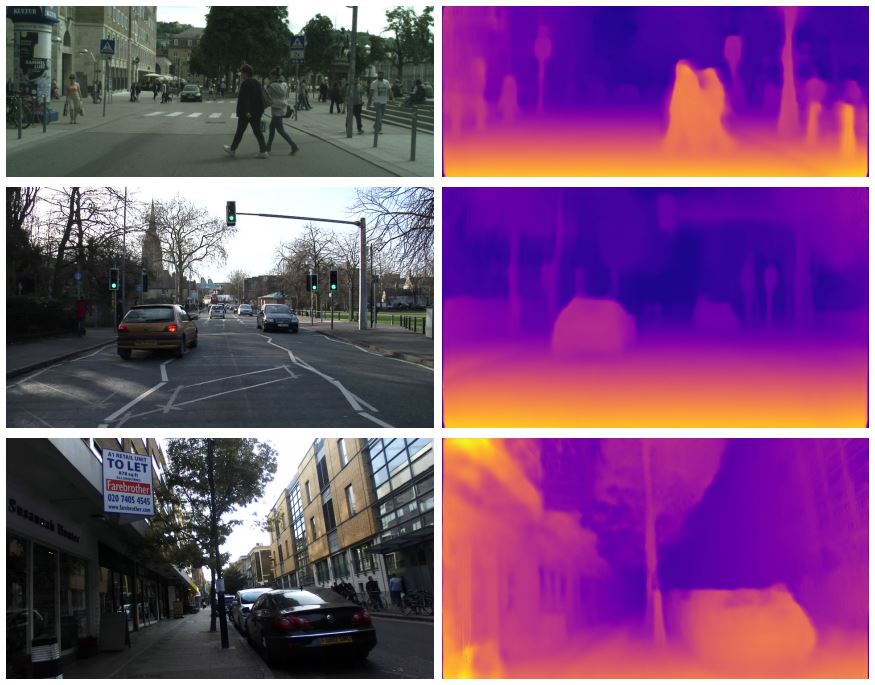

To coach AI fashions on depth-maps we are going to first need to generate depth-maps. Depth estimation is a job that helps machines see the world in 3D, similar to we do. This provides us an correct sense of distances and enhances our interactions with our environment. We use just a few frequent applied sciences to generate depth maps with cameras. For instance, Time-of-Flight and Gentle Detection and Ranging (LiDAR), are widespread depth-sensing applied sciences engineers use in fields like robotics, industrial automation, and autonomous autos. Subsequent, let’s clarify these vital pc imaginative and prescient (CV) applied sciences.
How Does Depth Estimation Work?
Throughout the world of depth sensing applied sciences there isn’t a single resolution to each software, in some instances, engineers could even use a mix of strategies to attain the specified outcomes. A robotic or an autonomous car can use cameras and sensors with embedded software program to sense depth info using widespread strategies. These strategies normally encompass a sign that may be something from mild or sound to particles. Then some algorithms are utilized to calculate the Time-of-flight and extract info from that.
instance is stereo depth estimation, not like monocular depth estimation it really works through the use of 2 cameras with sensors taking pictures in parallel. That is like human binocular imaginative and prescient as a result of engineers set two cameras just a few centimeters aside. The embedded software program detects the matching options within the pictures. Since every picture may have a special offset of the detected options, the software program makes use of the offset to calculate the depth of the purpose by a way known as triangulation.


Most stereo-depth cameras use lively sensing and a patterned mild projector, that casts a sample on surfaces, that helps determine flat or textureless objects. These cameras usually use near-infrared (NIR) sensors, enabling them to detect each the projected infrared sample and visual mild. Different methods like LiDAR use mild within the type of a laser that activates and off quickly to measure distances from which software program can calculate depth measurements. That is usually utilized in creating 3D maps of locations, it may be used to discover caves, historic websites, and any earth floor. Alternatively, monocular depth estimation depends on utilizing one picture to foretell the depth map, utilizing AI methods for correct predictions. Let’s take a look at the completely different AI methods utilized in monocular depth estimation.
AI Strategies In Monocular Depth Estimation
Whereas stereo depth estimation methods are helpful for some situations, developments in synthetic intelligence have opened the door for brand spanking new use instances of depth estimation, corresponding to monocular depth estimation. With the ability of machine studying engineers can prepare and infer machine studying fashions to foretell depth maps from a single picture. This in flip led to developments in fields like autonomous driving, and augmented actuality. The primary benefit is that specialised gear isn’t wanted to sense the depth of knowledge. On this part, we are going to discover the AI methods used for monocular depth estimation.
Supervised Studying for Monocular Depth Estimation
Synthetic neural networks (ANNs) since their invention have been instrumental in fixing issues like monocular depth estimation. There are a number of methods a neural community will be skilled, and a kind of is supervised studying. In supervised studying, the mannequin is skilled on information with labels, the place a neural community can study relationships between the photographs and their depth maps, and make predictions based mostly on the realized relationships. Researchers broadly use convolutional neural networks (CNNs). CNNs can study an implicit relation between coloration pixels and depth. Mixed with post-processing and deep-learning approaches CNNs at the moment are essentially the most broadly used spine for depth estimation fashions.
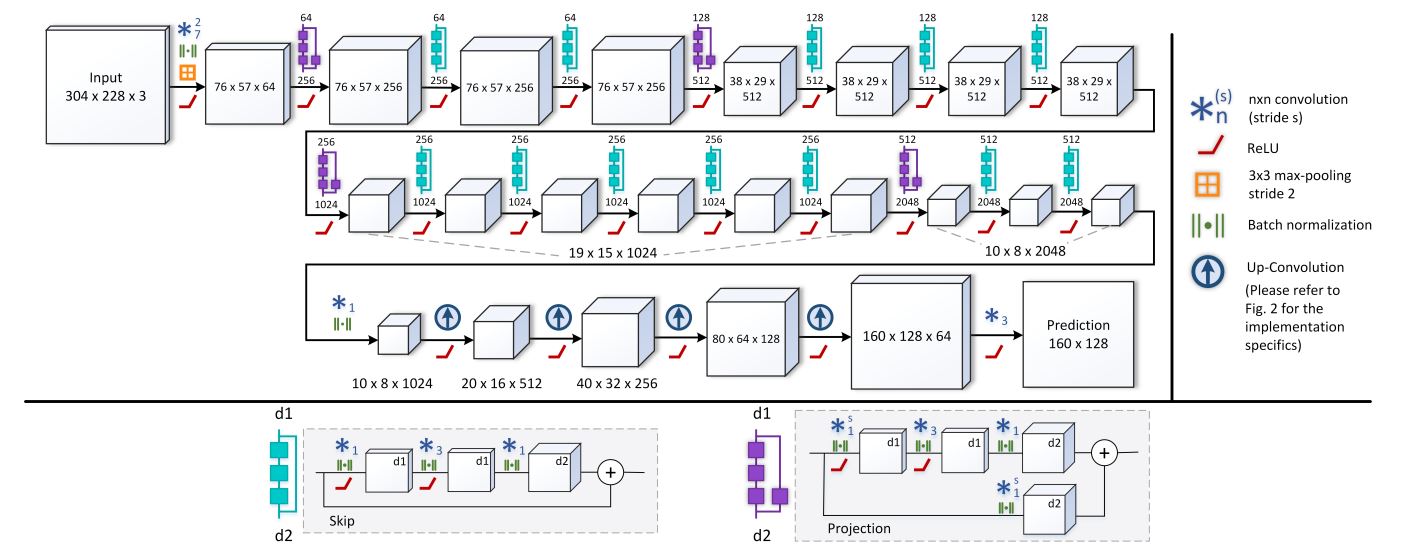

Since constructing and coaching these CNNs is a tough job, researchers normally use a pre-trained mannequin and apply the vital idea of switch studying. Switch studying is utilized to a mannequin that has been skilled on a basic dataset to make it work for a extra particular use case. Some widespread U-net-based architectures that researchers use as backbones for fine-tuned monocular depth estimation fashions are the next.
Nonetheless, extra fashionable structure will be Imaginative and prescient Transformers (ViT), these transformative fashions have been launched as options to CNNs in pc imaginative and prescient purposes. ViTs use a self-attention block within the structure permitting it to have a better capability and end in superior efficiency. These fashions principally depend on an encoder-decoder structure that may be made into completely different variations for various use instances. In comparison with CNN-based architectures, ViT-based ones have greater than a 28% efficiency enhance in depth estimation.


Whereas these strategies work nice with supervised studying, they rely closely on massive labeled datasets that are costly, time-consuming, and might have biases. Subsequent, let’s discover different coaching strategies.
Unsupervised and Self-Supervised Studying for Monocular Depth Estimation
Most monocular depth estimation approaches deal with depth prediction as a supervised regression downside and in consequence, require huge portions of ground-truth depth information for coaching. Nonetheless, different unsupervised and self-supervised approaches obtain nice leads to depth prediction with easier-to-obtain binocular stereo footage. Researchers can leverage stereo-image pairs throughout the mannequin’s coaching to permit neural networks to study implicit relations between the pairs.
The core thought is to coach the community to reconstruct one picture of the stereo pair from the opposite. By studying to do that, the community implicitly learns concerning the depth of the scene. Mixed with different approaches like left-right consistency unsupervised approaches can lead to state-of-the-art efficiency. Left-right consistency permits the community to foretell disparity maps for each the left and proper pictures, and the coaching loss encourages these disparity maps to be in step with one another.
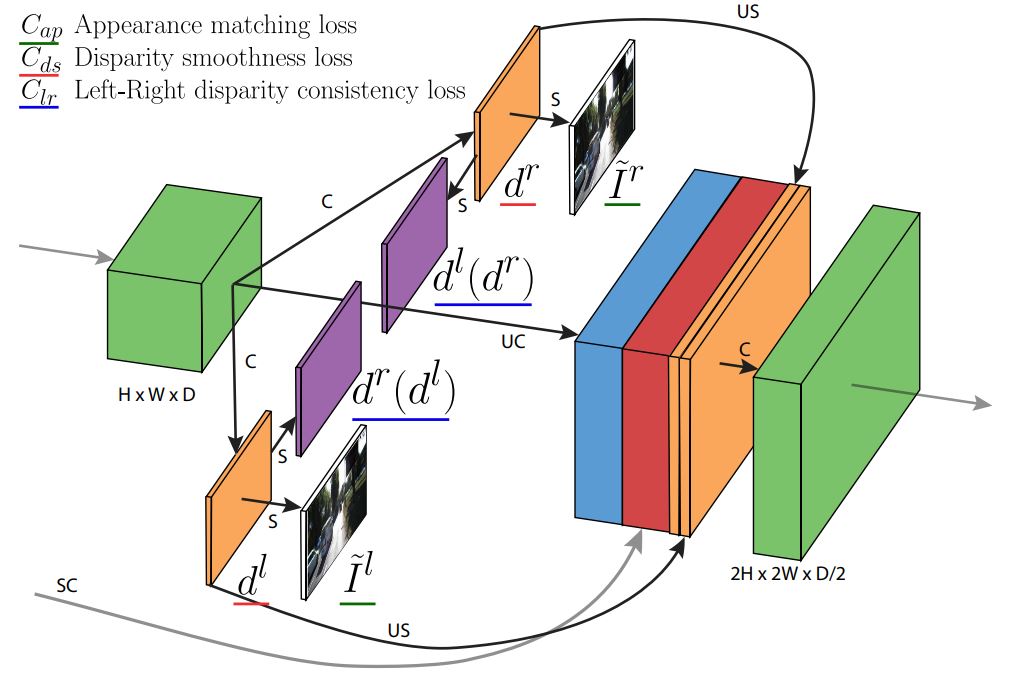

Self-supervised studying is one other strategy researchers have taken for depth estimation. One of many widespread research makes use of a video sequence to coach the neural community. The neural community learns the distinction between body A and body B utilizing pose estimation. The community tries to reconstruct body B from body A, examine the reconstruction, and reduce the error. Moreover, the researchers of this research used just a few methods to enhance the efficiency.
These methods embrace auto-masking the place objects which are stationary in each body are masked to not confuse the mannequin, and full-resolution multi-scale to enhance high quality and accuracy. That being stated, depth-estimation approaches are continuously evolving, and researchers are discovering new methods to make correct depth maps from single pictures. So, subsequent, let’s get right into a step-by-step tutorial to construct a depth-estimation mannequin.
Step-by-Step Tutorial: Utilizing a Depth Estimation Mannequin
Now that we’ve got explored the theoretical ideas of monocular depth estimation, let’s roll up our sleeves for a sensible implementation with Python. On this tutorial, we are going to undergo the method of constructing and utilizing a depth estimation mannequin. We might be using the Keras framework with Tensorflow, and constructing upon the offered instance by Keras. Nonetheless, some prior data of Python and machine studying ideas might be useful for this part. On this instance, we’ll adapt and enhance upon the code from the Keras tutorial on monocular depth estimation and we’ll construction it as follows.
- Setup and Information Preparation
- Constructing the Information Pipeline
- Constructing the Mannequin and Defining the Loss
- Mannequin Coaching and Inference
So, let’s begin with the setup and information preparation for this tutorial.
Setup and Information Preparation
For this tutorial, we are going to use Kaggle as the environment and the Dense Indoor and Outside Depth (DIODE) Dataset to coach our mannequin. So, let’s begin by getting ready the environment and importing the wanted libraries. I created a brand new Kaggle pocket book and enabled GPU acceleration.
import os os.environ["KERAS_BACKEND"] = "tensorflow" import sys import tensorflow as tf import keras from keras import layers from keras import ops import pandas as pd import numpy as np import cv2 import matplotlib.pyplot as plt keras.utils.set_random_seed(123)
These imports give us all of the libraries we want for the monocular depth estimation mannequin. We’re utilizing the OS, SYS, OpenCV (CV2) Tensorflow, Keras, Numpy, Pandas, and Matplot. Keras and TensorFlow are going to be the backend, OS and SYS will assist us with information loading, CV2 will assist us course of the photographs, and Numpy and Pandas to facilitate between the loading and processing.
Subsequent, let’s obtain the information, as talked about beforehand we are going to use the DIODE dataset, nonetheless, we are going to solely use the validation dataset as a result of the total dataset is over 80GB which is simply too massive for our objective. The validation information is 2.6GBs which is less complicated to deal with and higher for our objective so we are going to use that.
annotation_folder = "/kaggle/working/dataset/"
if not os.path.exists(os.path.abspath(".") + annotation_folder):
annotation_zip = keras.utils.get_file(
"val.tar.gz",
cache_subdir=os.path.abspath(annotation_folder), # Extract to /kaggle/working/dataset/
origin="http://diode-dataset.s3.amazonaws.com/val.tar.gz",
extract=True,
)
This code downloads the validation set of the DIODE dataset to the Kaggle/working folder, and it’ll extract it in a folder known as dataset in there. So, now we’ve got the dataset put in in our Kaggle workspace. Subsequent, let’s put together this information and course of it to grow to be appropriate to be used in coaching our mannequin.
df_list = [] # To Retailer Each Indoor and Outside
for scene_type in ["indoors", "outdoor"]:
path = os.path.be part of("/kaggle/working/dataset/val", scene_type)
filelist = []
for root, dirs, recordsdata in os.stroll(path):
for file in recordsdata:
filelist.append(os.path.be part of(root, file))
filelist.kind()
information = {
"picture": [x for x in filelist if x.endswith(".png")],
"depth": [x for x in filelist if x.endswith("_depth.npy")],
"masks": [x for x in filelist if x.endswith("_depth_mask.npy")],
}
df = pd.DataFrame(information)
df = df.pattern(frac=1, random_state=42)
df_list.append(df) # Append the dataframe to the record
# Concatenate the dataframes
df = pd.concat(df_list, ignore_index=True)
#Examine if Paths are right
print(df.iloc[0]['image'])
print(df.iloc[0]['depth'])
print(df.iloc[0]['mask'])
Don’t be intimidated by the code, what this mainly does is it goes by the recordsdata we downloaded, and appends the file names right into a Pandas information body. Since we might be utilizing each indoor and outside pictures from the dataset we use 3 For loops, that first undergo the indoors folder, we put the “.png” picture recordsdata in a column, the depth values in a column, and the masks in one other.
Constructing The Information Pipeline
For monocular depth estimation, we use the depth values and the masks to generate a depth map that we’ll use to coach the mannequin alongside the unique pictures. We’ll construct a pipeline perform that basically does the next.
- Learn a Pandas information body with paths for the RGB picture, the depth, and the depth masks recordsdata.
- Load and resize the RGB pictures.
- Reads the depth and depth masks recordsdata, processes them to generate the depth map picture, and resizes it.
- Return the RGB pictures and the depth map pictures for every batch.
Sometimes in machine studying, information pipelines are constructed as courses, this makes it simpler to make use of the pipeline as many occasions as wanted. On this tutorial, we are going to construct it as a perform that makes use of some widespread information processing strategies that may assist us prepare our mannequin effectively.
def load_and_preprocess_data(df_row, img_size=(256, 256)):
"""
Masses and preprocesses picture and depth map from a DataFrame row
"""
img_path = df_row['image']
depth_path = df_row['depth']
mask_path = df_row['mask']
img = cv2.imread(img_path)
img = cv2.cvtColor(img, cv2.COLOR_BGR2RGB)
img = cv2.resize(img, img_size)
img = tf.picture.convert_image_dtype(img, tf.float32) # Use tf.picture.convert_image_dtype
depth_map = np.load(depth_path).squeeze()
masks = np.load(mask_path)
masks = masks > 0
max_depth = min(300, np.percentile(depth_map, 99))
depth_map = np.clip(depth_map, 0.1, max_depth)
depth_map = np.log(depth_map, the place=masks)
print("Min/Max depth earlier than preprocessing:", np.min(depth_map), np.max(depth_map))
depth_map = np.ma.masked_where(~masks, depth_map)
depth_map = np.clip(depth_map, 0.1, np.log(max_depth))# Clip after masking
depth_map = cv2.resize(depth_map, img_size)
depth_map = np.expand_dims(depth_map, axis=-1)
depth_map = tf.picture.convert_image_dtype(depth_map, tf.float32)
print("Min/Max depth after preprocessing:", np.min(depth_map), np.max(depth_map))# Use tf.picture.convert_image_dtype
return img, depth_map
Now let’s visualize a few of our information.
import matplotlib.pyplot as plt
def visualize_data(picture, depth_map, masks):
"""
Visualizes the picture and its corresponding depth map with masks utilized.
"""
# Apply masks to depth map
masked_depth = depth_map * masks
fig, axes = plt.subplots(1, 3, figsize=(15, 5))
axes[0].imshow(picture)
axes[0].set_title('Picture')
# Use plt.cm.jet colormap
axes[1].imshow(depth_map, cmap=plt.cm.jet)
axes[1].set_title('Uncooked Depth Map')
# Use plt.cm.jet colormap
axes[2].imshow(masked_depth, cmap=plt.cm.jet)
axes[2].set_title('Masked Depth Map')
plt.savefig("visualization_example.jpg")
plt.present()
# Instance utilization
for i in vary(3):
img, depth_map = load_and_preprocess_data(df.iloc[i])
# Load the masks
mask_path = df.iloc[i]['mask']
masks = np.load(mask_path)
masks = cv2.resize(masks, (img.form[1], img.form[0])) # Resize masks to match picture
masks = np.expand_dims(masks, axis=-1) # Add channel dimension
visualize_data(img, depth_map, masks)
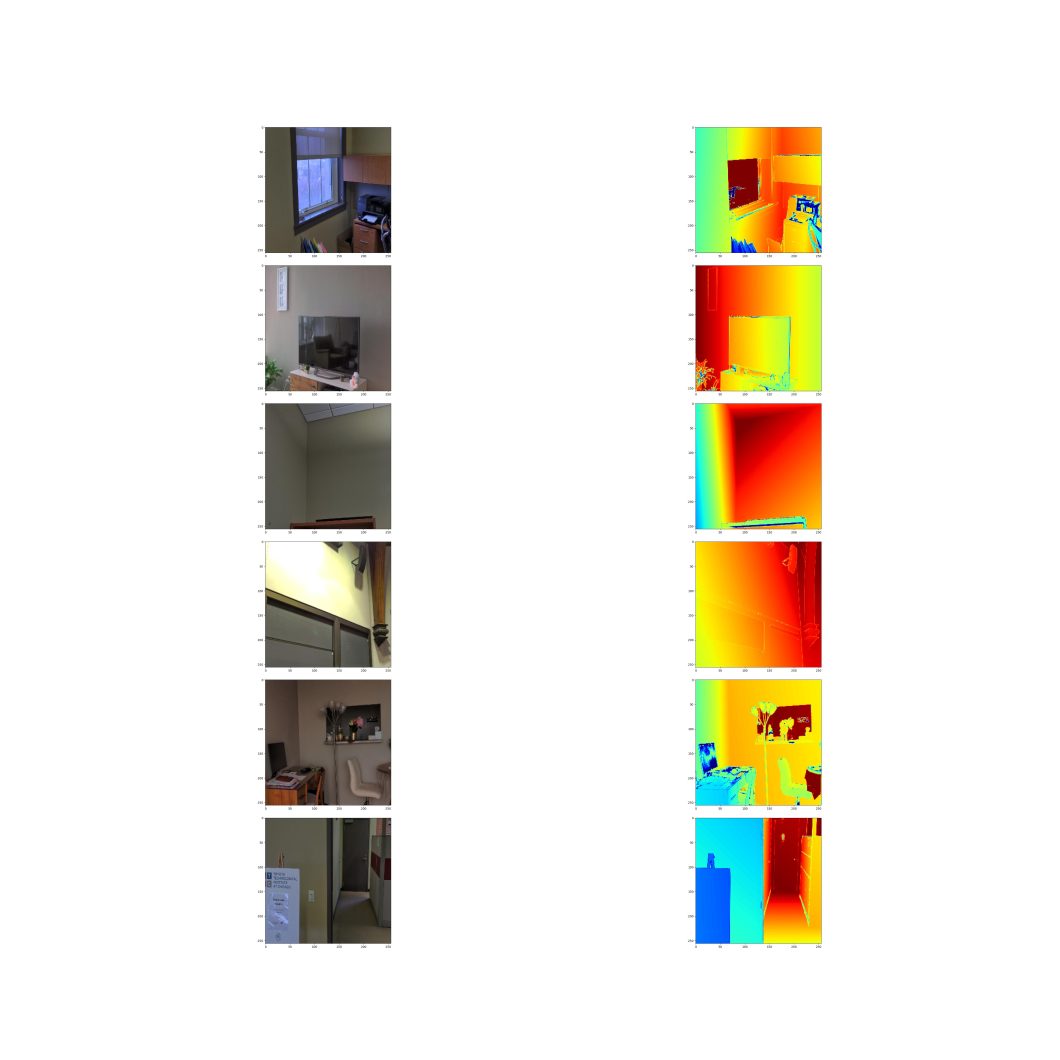

Constructing the Mannequin and Defining the Loss
Now we’ve got reached what will be the trickiest a part of this tutorial, however it’s attention-grabbing so sustain. For this tutorial, we are going to use an structure for the mannequin as follows.
- ResNet50 Encoder as a Spine
- 5 Decoder Layers
- An Output layer
A doable enchancment will be so as to add a bottleneck layer and optimize the decoder/encoder layers. This structure is straightforward and permits us to attain first rate outcomes. Let’s get to the code.
def create_depth_estimation_model(input_shape=(256, 256, 3)):
"""
Creates a depth estimation mannequin with ResNet50 encoder and U-Internet decoder.
"""
# Encoder
inputs = Enter(form=input_shape)
base_model = ResNet50(weights="imagenet", include_top=False, input_tensor=inputs)
# Get characteristic maps from encoder
skip_connections = [
base_model.get_layer("conv1_relu").output, # (None, 128, 128, 64)
base_model.get_layer("conv2_block3_out").output, # (None, 64, 64, 256)
base_model.get_layer("conv3_block4_out").output, # (None, 32, 32, 512)
base_model.get_layer("conv4_block6_out").output, # (None, 16, 16, 1024)
]
# Decoder
up1 = UpSampling2D(dimension=(2, 2))(base_model.output) # (None, 32, 32, 2048)
concat1 = concatenate([up1, skip_connections[3]], axis=-1) # (None, 32, 32, 3072)
conv1 = Conv2D(1024, 3, activation='relu', padding='similar')(concat1)
conv1 = Conv2D(1024, 3, activation='relu', padding='similar')(conv1)
up2 = UpSampling2D(dimension=(2, 2))(conv1) # (None, 64, 64, 1024)
concat2 = concatenate([up2, skip_connections[2]], axis=-1) # (None, 64, 64, 1536)
conv2 = Conv2D(512, 3, activation='relu', padding='similar')(concat2)
conv2 = Conv2D(512, 3, activation='relu', padding='similar')(conv2)
up3 = UpSampling2D(dimension=(2, 2))(conv2) # (None, 128, 128, 512)
concat3 = concatenate([up3, skip_connections[1]], axis=-1) # (None, 128, 128, 768)
conv3 = Conv2D(256, 3, activation='relu', padding='similar')(concat3)
conv3 = Conv2D(256, 3, activation='relu', padding='similar')(conv3)
up4 = UpSampling2D(dimension=(2, 2))(conv3) # (None, 256, 256, 256)
concat4 = concatenate([up4, skip_connections[0]], axis=-1) # (None, 256, 256, 320)
conv4 = Conv2D(128, 3, activation='relu', padding='similar')(concat4)
conv4 = Conv2D(128, 3, activation='relu', padding='similar')(conv4)
up5 = UpSampling2D(dimension=(2, 2))(conv4) # (None, 512, 512, 128)
conv5 = Conv2D(64, 3, activation='relu', padding='similar')(up5)
conv5 = Conv2D(64, 3, activation='relu', padding='similar')(conv5)
# Output layer
output = Conv2D(1, 1, activation='linear')(conv5) # or 'sigmoid'
mannequin = Mannequin(inputs=inputs, outputs=output)
return mannequin
Using Keras and Tensorflow, we’ve got constructed the structure that we encompassed inside a perform. The picture dimension used right here is 256×256 so that may be elevated if wanted however it might enhance the coaching time. Subsequent, we should always outline a loss perform that may optimize the mannequin because it’s coaching, for the loss perform we are able to go as complicated or so simple as wanted. On this tutorial, we are going to use a reasonable strategy. A easy imply squared error loss perform mixed with Huber loss.
from tensorflow.keras import backend as Ok
def custom_loss(y_true, y_pred):
mse_loss = Ok.imply(Ok.sq.(y_true - y_pred))
huber_loss = tf.keras.losses.huber(y_true, y_pred)
# Mix the losses
total_loss = mse_loss + 0.1 * huber_loss
return total_loss
Every of these losses has a weight, which we outlined to be 0.1 right here. Lastly, we have to break up the information and run it by our information perform to feed it to the mannequin subsequent.
pictures = []
depth_maps = []
for index, row in df.iterrows():
img, depth_map = load_and_preprocess_data(row)
pictures.append(img)
depth_maps.append(depth_map)
pictures = np.array(pictures)
depth_maps = np.array(depth_maps)
X_train, X_val, y_train, y_val = train_test_split(
pictures, depth_maps, test_size=0.2, random_state=42
)
Mannequin Coaching and Inferencing
To coach the mannequin we constructed, we must compile it and match it to the information we’ve got.
with tf.gadget('/GPU:0'): # Use the primary accessible GPU
mannequin = create_depth_estimation_model()
mannequin.compile(optimizer="adam", loss=custom_loss, metrics=['mae'])
historical past = mannequin.match(
X_train,
y_train,
epochs=60,
batch_size=32,
validation_data=(X_val, y_val),
shuffle=True
)
So, right here we compile the mannequin and create it on the GPU, after which we match it. I didn’t implement many hyperparameters on this case, I used the variety of epochs to coach the mannequin, and I enabled the shuffle to attempt to forestall overfitting. The batch dimension is 32 which is an effective worth for our Kaggle setting. There may very well be extra hyperparameters in there, like the educational charge. This coaching would take round 10-Quarter-hour. Subsequent, we are able to outline a small perform to arrange an enter picture to check the skilled mannequin.
def load_and_preprocess_image(image_path, img_size=(256, 256)):
"""Masses and preprocesses a single picture."""
img = cv2.imread(image_path)
img = cv2.cvtColor(img, cv2.COLOR_BGR2RGB)
img = cv2.resize(img, img_size)
img = tf.picture.convert_image_dtype(img, tf.float32)
return img
new_image = load_and_preprocess_image("/kaggle/enter/keras-depth-bee-image/bee.jpg")
This can be a easy perform that does an analogous factor to what the “load_and_preprocess_data” perform did. Then we are able to infer the mannequin utilizing the easy line beneath.
predicted_depth = mannequin.predict(np.expand_dims(new_image, axis=0))
Now, we examined our picture with the skilled mannequin. Let’s view the outcomes.
import matplotlib.pyplot as plt
plt.determine(figsize=(10, 5))
plt.subplot(1, 2, 1)
plt.imshow(new_image)
plt.title("Authentic Picture")
plt.subplot(1, 2, 2)
plt.imshow(predicted_depth[0, :, :, 0], cmap=plt.cm.jet) # Take away batch dimension and channel
plt.title("Predicted Depth Map")
plt.present()
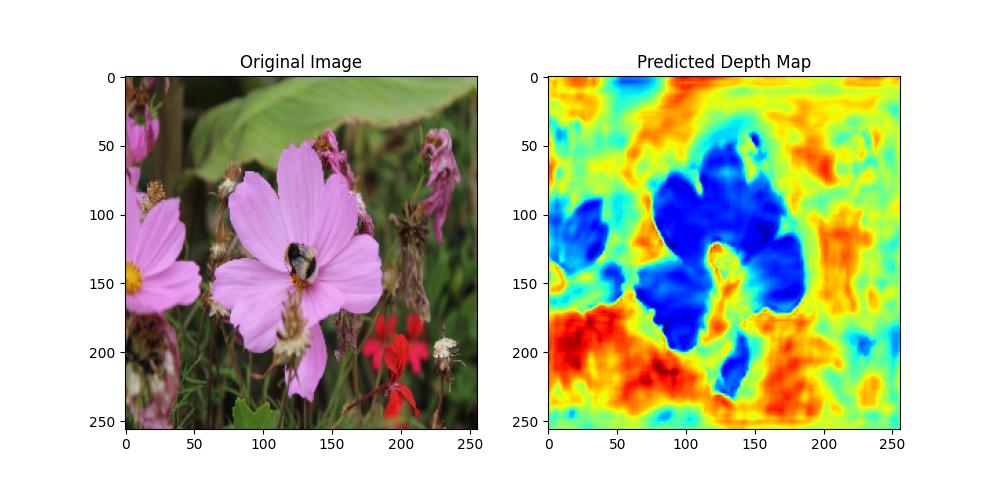

In abstract, constructing a monocular depth estimation mannequin from scratch will be an in depth job. Nonetheless, it’s a good way to study an important job in pc imaginative and prescient. The mannequin on this tutorial is only a easy demonstration, the outcomes are usually not going to be nice due to the simplicity and the shortcuts we took. Moreover, we are able to strive a pre-trained mannequin with just a few traces of code and see the distinction.
Inferring a Pre-Educated Mannequin
On this part, we are going to use a easy inference on the Depth AnythingV2 mannequin, which achieves state-of-the-art outcomes on benchmark datasets like KITTI. Furthermore, to make use of this mannequin we solely want the few traces of code beneath.
from transformers import pipeline from PIL import Picture # load pipe pipe = pipeline(job="depth-estimation", mannequin="depth-anything/Depth-Something-V2-Small-hf") # load picture url="/kaggle/enter/keras-depth-bee-image/bee.jpg" picture = Picture.open(url) # inference depth = pipe(picture)["depth"]
If we save the “depth” variable we are able to see the results of the depth estimation which can also be fairly quick contemplating that we’re utilizing the small variation of the mannequin.
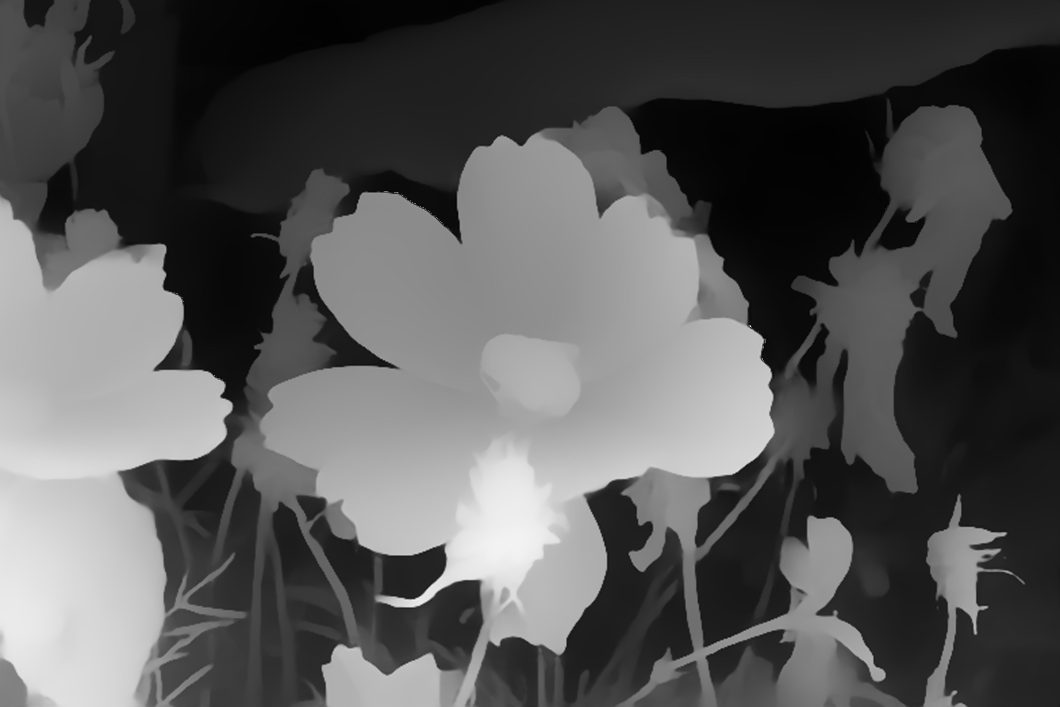

With this, we’ve got concluded the tutorial, nonetheless, that is solely a beginning step to constructing monocular depth estimation fashions. These fashions are a large analysis space in CV and are seeing fixed enhancements. It is because they’ve a variety of use instances, monocular depth estimation is vital for autonomous autos, robotics, well being, and even agriculture and historical past.
The Future Of Monocular Depth Estimation
As we’ve got seen, monocular depth estimation is a difficult however vital job in pc imaginative and prescient. Functions span from autonomous driving, robotics, and augmented actuality, to 3D modeling. The sphere remains to be enhancing, with researchers exploring new implementations and theories and pushing the boundaries. Deep studying with transformers is one promising space. This contains exploring architectures like Imaginative and prescient Transformers (ViT) which have proven promising leads to many pc imaginative and prescient duties together with monocular depth estimation.
Moreover, researchers strive integrating monocular depth estimation with different pc imaginative and prescient duties. Object detection, semantic segmentation, and scene understanding mixed with depth estimation, can create extra complete AI methods that may work together with the world extra successfully.
The way forward for monocular depth estimation is vibrant, with ongoing analysis promising to ship extra correct, environment friendly, and versatile options. As these developments proceed, we are able to anticipate to see much more revolutionary purposes emerge, remodeling industries and enhancing our interplay with the world round us.
FAQs
Q1. What’s monocular depth estimation?
Monocular depth estimation is a pc imaginative and prescient approach for estimating depth info from a single picture.
Q2. Why is monocular depth estimation vital?
Monocular depth estimation is essential for numerous purposes the place understanding 3D scene geometry from a single picture is critical. This contains:
- Autonomous driving.
- Robotics.
- Augmented actuality (AR).
Q3. What are the challenges in monocular depth estimation?
Estimating depth from a single picture is inherently ambiguous, as a number of 3D scenes can produce the identical 2D projection. This makes monocular depth estimation difficult. Key challenges embrace occlusions, textureless areas, and scale ambiguity.



